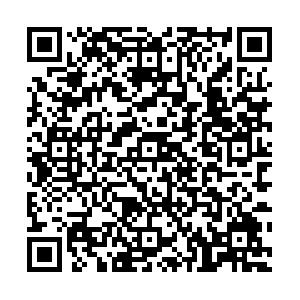Screening of Congenital Heart Disease at Different Time in Neonates in Anning Area by Auscultation Combined with Pulse Oximetry
-
摘要:
目的 分析安宁地区新生儿出生后不同时间段采用心脏杂音听诊(MUR)联合脉搏氧饱和度(POX)筛查先天性心脏病(CHD)的价值。 方法 选取于2021年6月至2022年11月间安宁市第一人民医院产科出生的新生儿及转新生儿科住院的患儿共1833例为研究对象。根据日龄分为24~72 h组(575例)、2~4周组(1258例)均采用心脏杂音听诊(MUR)联合脉搏氧饱和度(POX)“双指标法”筛查CHD,并对研究对象进行心脏彩超检查,记录新生儿出生后不同时间段心脏杂音听诊联合脉搏氧饱和度筛查CHD情况及应价值。 结果 1833例新生儿中,经心脏超声确诊的先心病68例,发病率3.71%,位于前3位的疾病类型分别为室间隔缺损23例(33.82%),房间隔缺损22例(32.35%),卵圆孔未闭16例(23.53%);24~72 h组心脏杂音听诊联合脉搏氧饱和度检测筛查阳性率为12.00%,漏诊率39.13%;2~4周组筛查阳性率为5.88%,漏诊率28.89%,筛查阳性率χ2 = 2.474,漏诊率χ2 = 3.441,P < 0.05;24~72 h组心脏杂音听诊联合脉搏氧饱和度检测筛查灵敏度60.87%,特异度90.04%,准确度为88.87%,假阳性率79.71%,假阴性率1.78%,阳性预测值20.29%、阴性预测值98.22%,约登指数0.5089;2~4周组筛查灵敏度71.11%,特异度96.54%,准确度为95.63%,假阳性率56.76%,假阴性率1.10%,阳性预测值43.24%、阴性预测值98.90%,约登指数0.6764,灵敏度χ2 = 8.325,特异度χ2 = 7.051,P < 0.05。 结论 对新生儿出生后采用心脏杂音听诊(MUR)联合脉搏氧饱和度(POX)筛查CHD,筛查时间段2~4周时准确率最高,漏诊率低,可提升新生儿出生质量,对促进安宁地区新生儿优生优育具有重要作用。 Abstract:Objective To study the value of heart murmur auscultation (MUR) combined with pulse oximetry (POX) in the screening of congenital heart disease (CHD) at different time periods after birth in Anning area. Methods A total of 1833 newborns born in the obstetrics department and referred to the Department of Neonatology of Anning First People’s Hospital from June 2021 to November 2022 were selected as the study subjects. According to the age, the subjects were divided into 24-72 hours group (575 cases) and 2-4 weeks group (1258 cases). The double-index method of heart murmur auscultation (MUR) combined with pulse oxygen saturation (POX) was used to screen CHD. The value of heart murmur auscultation combined with pulse oxygen saturation in screening CHD at different time points after birth was recorded. Results Among the 1833 neonates, 68 were diagnosed with CHD by echocardiography, with an incidence rate of 3.71%.The top three types of CHD were ventricular septal defect (23 cases, 33.82%), atrial septal defect (22 cases, 32.35%), and patent foramen ovale (16 cases, 23.53%). The positive rate of heart murmur auscultation combined with pulse oxygen saturation detection in 24-72 hours group was 12.00%, and the missed diagnosis rate was 39.13%. The screening positive rate of 2-4 weeks group was 5.88%, and the missed diagnosis rate was 28.89%, Screening positive rate χ2 = 2.474, missed diagnosis rate χ2 = 3.441, P < 0.05. In 24-72 hours group, the sensitivity of heart murmur auscultation combined with pulse oxygen saturation detection was 60.87%, and the specificity was 90.04%, the accuracy was 88.87%, the false positive rate was 79.71%, the false negative rate was 1.78%, the positive predictive value was 20.29%, the negative predictive value was 98.22%, and the Youden index was 0.5089. The screening sensitivity, specificity, accuracy, false positive rate, false negative rate, positive predictive value, negative predictive value and Youden index of 2-4 weeks group were 71.11%, 96.54%, 95.63%, 56.76%, 1.10%, 43.24%, 98.90% and 0.6764, respectively;sensitivity χ2 = 8.325, specificity χ2 = 7.051, P < 0.05. Conclusion For CHD screening of newborns after birth, heart murmur auscultation (MUR) combined with pulse oxygen saturation (POX) has the highest accuracy and low rate of missed diagnosis at 2-4 weeks of screening time, which can improve the birth quality of newborns and play an important role in promoting neonatal eugenic and eugenic care in Anning area. -
Key words:
- Heart murmur auscultation /
- Pulse oximetry /
- Congenital heart disease /
- Newborn
-
表 1 患儿先心病分型及构成比情况
Table 1. Classification and constituent ratio of congenital heart disease in children
类型 n 构成比(%) 发病率(‰) 室间隔缺损 23 33.82 1.25 房间隔缺损 22 32.35 1.20 卵圆孔未闭 16 23.53 0.87 动脉导管未闭 3 4.41 0.16 室间隔缺损合并房间隔缺损 2 2.94 0.11 其他 2 2.94 0.11 表 2 不同时段筛查准确性比较[n(%)]
Table 2. Comparison of screening accuracy in different time periods[n(%)]
组别 阳性率 漏诊率 筛查人数(n) 心脏彩超(n) 灵敏
度特异
度假阳
性率假阴
性率阳性预
测值阴性预
测值阳性/阴性 阳性/阴性 24~72 h组(n = 575) 69/575(12.00) 9/23(39.13) 69/506 23/552 60.87 90.04 79.71 1.78 20.29 98.22 2~4周组(n = 1258) 74/ 1258(5.88) 13/45(28.89) 74/1184 45/1213 71.11 96.54 56.76 1.10 43.24 98.90 -
[1] 邓润迪,张凤文. 介入治疗小儿先天性心脏病的围术期管理[J]. 中国循环杂志,2021,36(9):933-936. [2] 胡晓静,马晓静,曾子倩,等. 应用脉搏血氧饱和度或/和临床评估(心脏杂音听诊)筛查新生儿危重型先天性心脏病的系统评价和Meta分析[J]. 中国循证儿科杂志,2020,15(5):325-332. [3] 宋宏琳, 卢江, 周汝芳, 等. 中国五省中小学生社区筛查先心病患病率与海拔及民族关系[J]中国公共卫生, 2021, 37(10): 1514-1516. [4] 顾虹. 《中国肺动脉高压诊断与治疗指南(2021版)》解读——聚焦先天性心脏病相关肺动脉高压[J]. 中国实用内科杂志,2021,41(10):855-858. [5] 刘雪贞,纪龙,张倩倩,等. 基于中国知网数据库(2007-2017)新生儿先心病研究的可视化分析[J]. 现代预防医学,2018,45(15):2756-2760. [6] 李春妮,王峥. 产前超声诊断对先天性心脏病的诊断价值和漏诊及误诊的原因分析[J]. 昆明医科大学学报,2020,41(10):138-143. [7] 刘媛媛. 实时三维超声用于先天性心脏病诊治中的进展[J]. 中国医疗器械信息,2021,27(12):17-18,190. [8] 唐欣,叶洪强. 心脏杂音听诊综合考虑与诊断分析[J]. 临床合理用药,2019,12(12):51-52. [9] 陆小涛,官子夺,达志煜,等. 先天性心脏病听诊及脉搏氧饱和度筛查诊断的排除标准[J]. 中国临床医学影像杂志,2020,31(7):1072-1074. [10] 徐理想,刘雨欣,覃杰,等. 结合心脏杂音与脉搏氧饱和度检测的新生儿先天性心脏病筛查[J]. 中国实用医药,2020,15(19):5-7. [11] 王晓红,史少娟,刘学,等. 先天性心脏病合并肺动脉高压患儿行根治术后的预后影响因素分析[J]. 东南国防医药,2021,23(2):131-135. [12] 王灵玲,张赟. 2014-2019年台州市立医院新生儿先天性心脏病筛查情况[J]. 中国妇幼保健,2021,36(24):5800-5802. [13] 泮思林,罗刚. 推进中国胎儿结构性心脏病宫内干预的相关问题与对策[J]. 中国实用儿科杂志,2021,36(5):332-335. [14] 陈宇雨,路发文,杨帆,等. 新生儿危重先天性心脏病的术前术后一体化救治经验[J]. 中国心血管病研究,2021,19(7):623-628. [15] 曹景颖,吴信,陈寄梅,等. 坚守初心与使命-我国先天性心脏病事业的开创与继承[J]. 中国心血管病研究,2021,19(7):577-581. [16] 马新平,刘彩霞,秦珍珍. 新生儿危重先天性心脏病的围术期治疗策略[J]. 中国药物与临床,2021,21(17):2978-2980. [17] 赵书嫣. 先天性心血管疾病筛查与基层医生培训进展[J]. 重庆医学,2018,47(17):2329-2332. doi: 10.3969/j.issn.1671-8348.2018.17.020 [18] 杨杪,贾品,田友平,等. 新生儿先天性心脏病筛查及成果转化探讨[J]. 医院管理论坛,2022,39(10):18-20. doi: 10.3969/j.issn.1671-9069.2022.10.005 [19] 陈纲,关吏,陈伟呈,等. 先天性心脏病产前产后诊治一体化管理初步经验[J]. 临床小儿外科杂志,2021,20(6):525-531. [20] 陈叶,龚敬宇,杜鹃. 新生儿先天性心脏病筛查的临床价值分析[J]. 中国妇幼健康研究,2019,30(9):1125-1128. [21] 董媛,张坚,李瑞真,等. 心脏杂音联合经皮血氧饱和度在新生儿先天性心脏病筛查中的应用价值[J]. 河北医药,2021,43(16):2459-2462. [22] 刘丹. 心脏彩超在新生儿先天性心脏病筛查中的应用[J]. 中国冶金工业医学杂志,2022,39(2):243. doi: 10.13586/j.cnki.yjyx1984.2022.02.112 -





 下载:
下载: 
